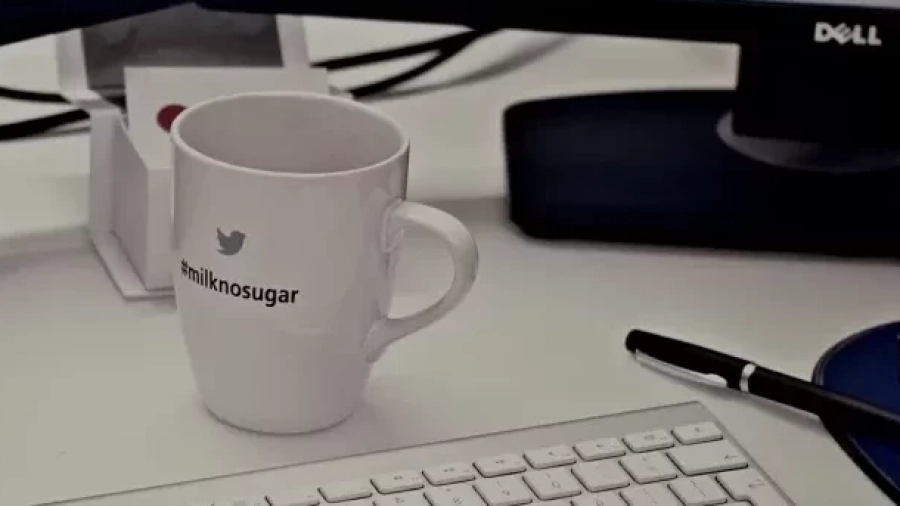Corporate presentations are generally made in PowerPoint because of the flexibility PowerPoint provides and ease of making them. Lately, new tools such as Prezi and Keynote are also used primarily because these tools provide some advanced animations, the quality of which at times becomes difficult to match in MS PowerPoint. However, I am a great advocate and lover of PowerPoint simply because there is a lot more to it than what meets the eye. Let me start off by telling exactly what the corporate presentations are made for.
Although there are no stringent rules laid down for the usage of presentations, according to me the ideal use of a corporate presentation would be during a one to one meeting with a prospective client. This meeting would generally be the first interaction with that client and the first impression may not necessarily be the last impression, but it is definitely a lasting impression. So you need to get this absolutely right!
There are a few ground rules I have set for myself before I start off with making a corporate presentation.
Rule # 1
Get your content absolutely right:
A corporate presentation is not a brochure which you would be attaching through e-mail to someone. So it doesn’t need to be self-explanatory. I am not a big fan putting in a lot of text content in the presentation because of a couple of reasons – a) You are going to explain it so you do not want the written and the spoken content to be either redundant or diverse b) No one reads it.
So ‘minimalism’ is the way to go as far as the content on the slides is concerned.
Long sentences are absolute taboo. A couple of slides with bullet points should be more than enough. All the other slides should either have graphics or have important words. These important words need to be explained through your speech. Use arrows, tables, flowcharts and graphics at all places possible.
Every slide needs to have a heading and this rule needs to be followed without exception. But, you can always play around and be creative with the headings. Finish off all your content about one topic on one slide in order to avoid using the same heading for consecutive slides.
Rule # 2
Go with the flow
The flow with which your corporate presentation goes is extremely important. After you are done with the brief introduction about your company, be quick to tell the person in front of him, what is in it for him. So long as the presentation is not related to the person sitting in front of you, it is very difficult to grab their attention. The flow of the presentation could be as follows:
Slide 1 – Cover: full name and logo and tagline
Slide 2 – Introduction: Year of founding, Vision, Mission, Beliefs, Values
Slide 3 – Company facts, Leadership team profiles
Slide 4 – Snap shot of all the services/products
Slide 5 to slide 9 – Details of the services/products
Slide 10 – Key differentiator
Slide 11 – Revenue model, Engagement model
Slide 12 – Success stories, clients
Slide 13 – Contact information
My ideal corporate presentation would contain anywhere between 12 to 15 slides. I often find presentations too much beyond 15 slides to be boring.
Rule # 3
Manage the time lines
For how long do you ideally present it largely depends on the interest of the person sitting in front of you. To an ideal audience, I prefer to give the presentation for around 10 to 12 minutes for a half an hour meeting time slot. If one of your slides lasts only for a few seconds, it does not have any business to be a part of the presentation at all. Try to dedicate equal time for each slide and take your own sweet time to explain things.
Rule # 4
Graphics, visuals and animations
Use the slide design and colour which is aligned with your brand colours. Do not use the most common slide designs which every other person from you B-school used for all of their presentations. It is appreciated if you can put your corporate logo on each slide, however, this is not a hard and fast rule which has to be followed. If you think that the logo ruins your slides, do not out your logo on any of the slides at all.
Animations have the potential to make even the dullest of presentations interesting. Learning animations in PowerPoint is not an overnight job. You first need to understand all the animations, and then think how you can use the animations to make your presentations more creative. Even if an expert is charged you thousands of rupees and delivers a corporate presentation with fantastic animations, it is worth spending. For some of the animated I have prepared, people hit the Escape key to check whether it is really a PowerPoint presentation. I consider this as my victory.
There has to be one ‘wow-factor’ in a PowerPoint presentation which people remember for a long time. It may be in the form of some creative entrance/exit effect or some interesting animation, if your presentation does not have it, you are just another potential vendor blabbering about the greatness of your company. An animation is the only difference between a PDF and a PPT, make the best of it.
Rule # 5
Engage the audience
The success and failure of a meeting often depend upon how successful you have been in engaging with your audience. There are some people who you just cannot engage. They are least interested in your services and if you had the guts to ask them to repeat your last line, they would be dumbstruck. They appear to have such a straight face that even if you threaten them with their life, their facial expressions would not change. Your corporate presentation is not made to impress those who cannot be impressed. You will end up meeting such people more often than you would like.
However, some people are interested are more interested in your services than knowing about your company. The presenters need to be on their toes to identify such an audience quickly and to make a few changes in their presentations.
Explain in details to those who have time. Spend time on each and every point and give as many examples as possible. Sharing your own experiences is always a good an idea and a quick and certain way to strike an immediate connection with your audience.
Always carry a.PPT as well as a.PPS file with you and as soon as you notice that some of the slides would be inappropriate in a situation, feel free to delete these slides. A .PPT file gives you the luxury to edit your presentations at the last moment, whereas a.PPS hides all the unwanted animations and unfilled text boxes and looks more professional.
Under any case, do not forget to turn slide show off while presenting.
Rule # 6
Know the objective of the presentation
To know the objective, you need to know what a presentation is. A corporate presentation is not a.PPT file made by the best designing company in the world; a corporate presentation is that performance where a presenter is as important as the.PPT file itself. As a presenter, you need to be thorough with your home work about the company you are visiting in order to avoid last moment slipups. The presentation needs to be practised really well since I do not consider it to be too different than a 12 minutes stage performance. With the backdrop, lights and sound well set in the form of the.PPT file, the artist needs to get into the act and convey a strong message across. The presentation gives directions to the presenter, supports him with the flow and brings in the ‘wow-factor’ into the presentation but the basic function of the corporate presentation is to break the ice and initiate a dialogue. In some situations, the presenters may find the audiences easily connecting with them and even sharing their business requirements. No matter how beautiful presentations you have, it is always advisable to keep yours.PPT file closed and connect on a personal level.
Need a good Corporate Presentation? Get in touch! 🙂


